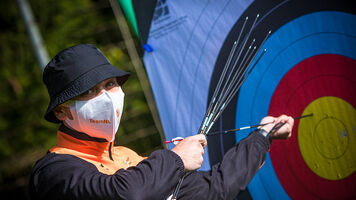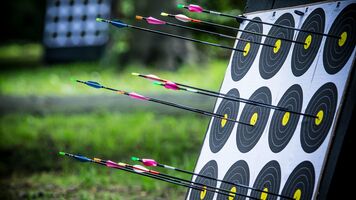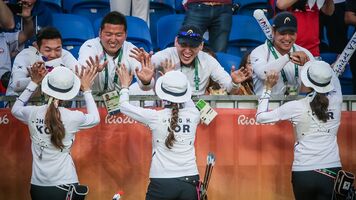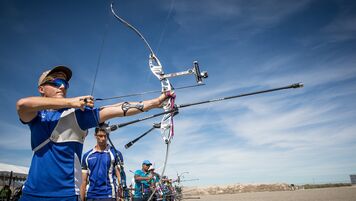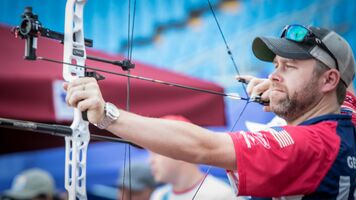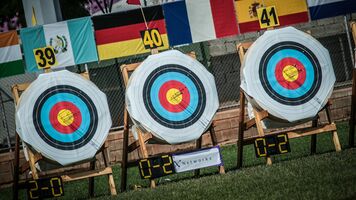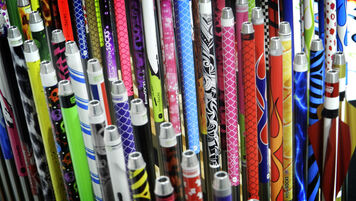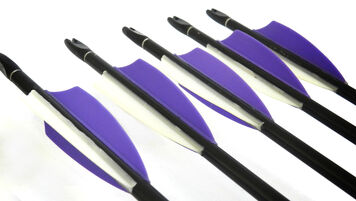Why visualisation is becoming a bigger part of the archery picture
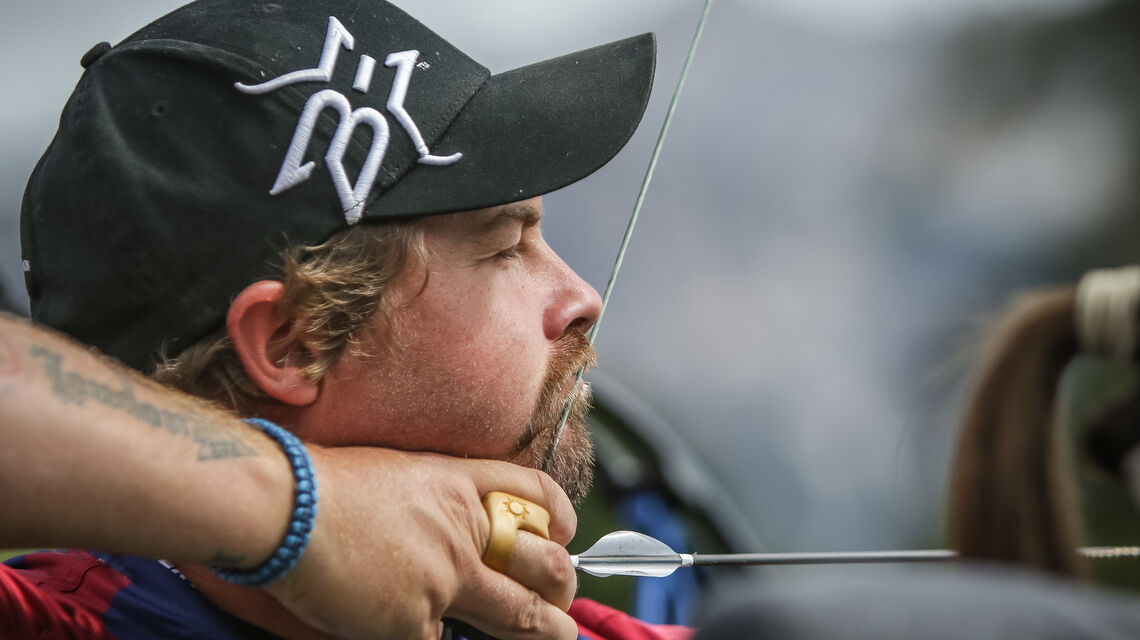
Israeli archer Itay Shanny stands in the middle of his hotel room, at the foot of his bed, dressed in everything he will wear the next day: a rain vest, a hat and a pair of trainers laced assertively on his feet.
In his head, there is a field. There is grass. There is wind against his neck. It is pretty noisy. There are people everywhere. It is probably raining.
“Everything in the competition,” Shanny says, “is going to be the same.”
Visualisation in elite sports dates back to the 1960s, but the underlying concepts are decades older, rooted in theories that have become increasingly essential as archery embraces new and sophisticated ways of training.
“It’s a limitless tool,” said Guy Matzkin, a sports psychologist and the head coach of the Israeli archery team. “Archery scores have advanced so much over the past 10 years, and it’s because coaches are using more empirically sound techniques like imagery, quality practice and goalsetting.”
The world’s top archers are effusive in their praise for visualisation techniques.
Brady Ellison, the world’s number-one-ranked recurve man, has said he spends five times more attention to his mental state than he does physically practising. Bernardo Oliveira of Brazil has recently written thoughtfully on the subject as well, while Jay Barrs, the 1988 Olympic Champion, employed similar methodologies long before the current academic language was ever in place.
“It’s total voodoo,” Barrs said. “You can’t hold it, you can’t touch it, and you can’t quantify it. But then it starts working.”
There are two major components to visualisation: vividness and controllability. The more vivid the imagery – using all of the senses to mentally simulate an experience – the more effective it will be. An archer should hear the roar of the crowd, feel the grass at their feet and adjust for the wind at their back, considering every last micron of the experience with as much precision and detail as possible.
“You have to be able to feel what you’re visualising,” Barrs said. “You can’t just see yourself shoot an arrow and have it go in the 10. You have to experience what that feels like internally.”
Controllability means having command of the scenario in your head. Archery tournaments are contested in controlled, fairly predictable environments, making them better suited to imagery than other sports. Rehearsing the events, even internally, goes a long way toward preparing for the actual experience of shooting in various conditions.
“I practice these pressure situations by living them in my head,” said the USA’s Casey Kaufhold. “That way, when I get there, it won’t feel as new. It will feel normal.”

Matzkin, Shanny and the rest of the Israeli team have served as both a player and proxy for the sport’s collective progress. Prior to Matzkin’s arrival in 2018, the country’s youth team won just one individual junior medal over the previous 20 years.
But the past two years have been markedly better. Israel has won four international medals in that time frame.
“These things never really happened before,” Shanny said. “We never expected to win medals. We weren’t very competitive internationally. But now it’s realistic. Now, it’s happening.”
Matzkin was careful to acknowledge other aspects of training that lead to team success. “It’s just one of the tools in the toolbox,” he said. “Sometimes you’ll need a screwdriver, and sometimes you’ll need a hammer. But the more tools you have in that toolbox, the more equipped you are to succeed.”
His archers emphasised this point. Shanny, who has shot less during the pandemic, assumed the language of a photographer when relaying an observation, saying he’s ‘noticed the resolution getting a little more dull’ after extended breaks from the practice range. An exercise that relies on memory loses value when you don’t have access to your bow.
“It becomes like a broken telephone,” Shanny explained. “Someone told someone who told me this is how a shot is supposed to feel. It’s not a substitute for the actual thing.”
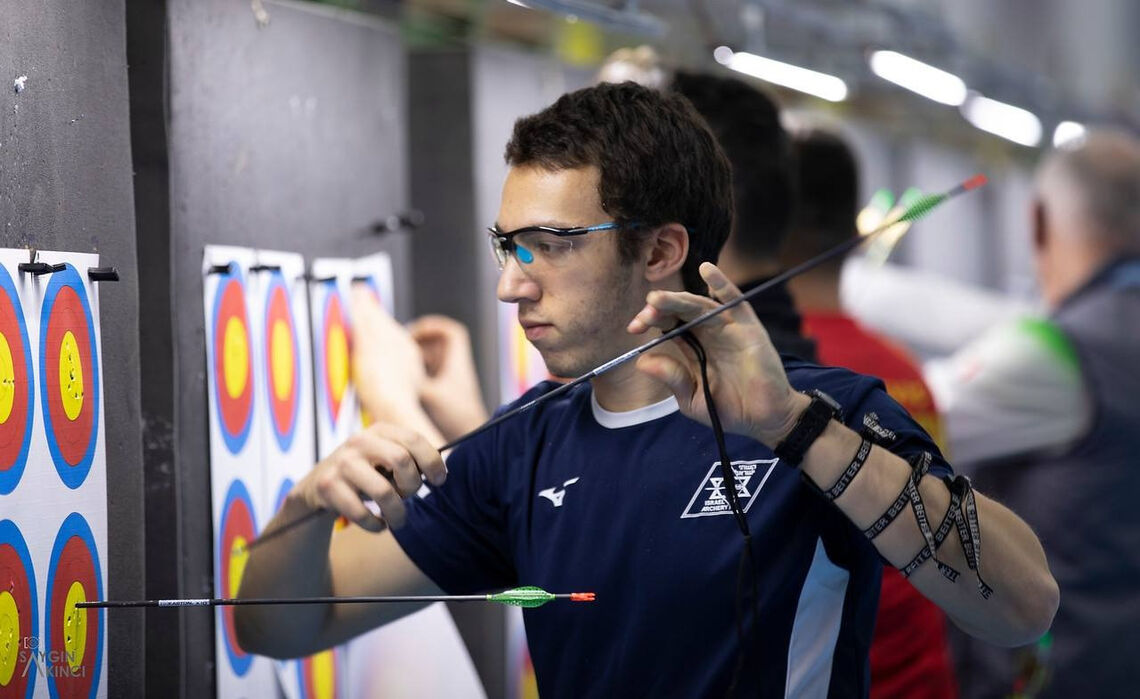
Matzkin nonetheless expressed bewilderment when identifying perhaps the sport’s greatest irony: a shortage of psychological training despite the consensus that archery is largely a mental game.
“It’s so ridiculous that people say it’s so important, but they’ll spend hours on the range without any quality psychological preparation,” Matzkin said. Matzkin relayed an anecdote to illustrate his point. When attending tournaments, Matzkin often surveys archers, asking them, ‘How did you practise to compete today?’ An account of how many arrows they shot usually follows, “And I’ll say, ‘No, I didn’t ask you how you trained. I asked you how you prepared for this competition’.”
“I’ll get this baffled look, a look of puzzlement,” Matzkin said. “And the fact that most archers don’t understand what I’m even asking is the foundation of what we’re working toward here.”
While exposure remains an obstacle, visualisation has proved adept at winning sceptics over. “My whole bend to it was with the mindset of: ‘It’s bullshit, and it doesn’t work,” said Barrs, who cites mental training as critical to his success at the Seoul 1988 Olympic Games. “Most of us ignored it. We just felt like we needed to shoot more arrows.”
A bowhunter from an early age, Barrs favoured a traditional approach to archery when Team USA coach Dick Tone mandated that his athletes incorporate mental exercises into their training. Dubious of its legitimacy, Barrs settled on positive affirmations: repeated declarations that describe how accomplished you want to be. Barrs considered it the path of least resistance – a way to appease his coach without disrupting his routine.
“That was my attitude going into it,” he said. “I’m going to prove it doesn’t work, and then we can get back to shooting.”
Each affirmation began the same way:
I enjoy and am comfortable… executing strong shots in the wind. I enjoy and am comfortable… winning tournaments. I enjoy and am comfortable… shooting 700 in a 70-metre round.
“How can you convince your mind that you’re better than you really are?” Barrs recalled thinking. “You know how good you are. It was difficult for us to wrap our heads around these things.”

But slowly, without even realising it, the affirmations started to take shape. Barrs revisited the cards multiple times per day, making sure to visualise the messages as he read them.
If the affirmation was a specific score, he would visualise a scorecard with the result next to his name. If the affirmation was a victory at a specific tournament, he would visualise his name atop the leaderboard – and the ensuing celebration. If the affirmation was an ability to execute reliably strong shots into the wind, he would visualise himself pulling the bow gently with exact form, the arrow penetrating through the air in perfect flight as it landed gracefully in the 10-ring.
A trip to the airport cemented the cards’ legitimacy. Barrs, living in Mesa, Arizona, was embarking on a series of tournaments away from home when he met with Tone during the summer.
“You know, if I get two days of good weather, I’m going to shoot a 1300,” Barr said, standing in the hot desert sun.
Only three archers from the USA had broken 1300 at the time. Yet the proclamation left his mouth so naturally. “I still don’t know why I said it,” Barrs admits now. “But I did, and then I did it. I couldn’t attribute it to anything else that I was doing.”
I enjoy and am comfortable… shooting 1300.
“It becomes what you expect to happen,” Barrs said. By visualising these scenarios in their heads, archers appear to condition themselves to expect performances beyond their current sense of possibility. “Your subconscious sets limits high and low on everything you do,” Barrs continued. “If you can raise the limit of where it thinks you are – your ‘comfort zone’ – then it will do whatever it takes to get you there physically.”
Incorporate enough details into your visualisation, in other words, and your brain will drag your body all the way there.
“Fake it till you make it,” Shanny said more succinctly. “If you envision yourself in the Olympics, you’re going to get used to the idea of you being there and – as result, maybe – change accordingly and evolve toward that goal.”

On a bookshelf, displayed proudly in his home, Barrs keeps a framed affirmation card written in gold pen. It reads, in capitals: “I WILL BE ON THE U.S. OLYMPIC TEAM, AND WIN THE GOLD!!”
He wrote the note in 1987, a year and a half before the Olympics in Seoul.
“I originally wrote it as, ‘I will be on the US Olympic Team’,” Barrs recalled. “Talking to Dick about it, he said, ‘That’s all you want to do?’”
He laughed.
“I went, ‘Well, I guess I want to win the whole thing, huh?’ He goes, ‘Yup’. So I went and rewrote it.”
The affirmation originally resided in the bathroom mirror of his apartment. For a year and a half, he walked past it, the pursuit slowly becoming wedged into his brain as he visualised it becoming true.
“I shot the Olympic final round probably 1000 times over the year before the Olympic Games – in my mind,” Barrs said. “I could hear the crowd, I could smell the field, I could feel the wind, I could smell the target butts. Everything.”
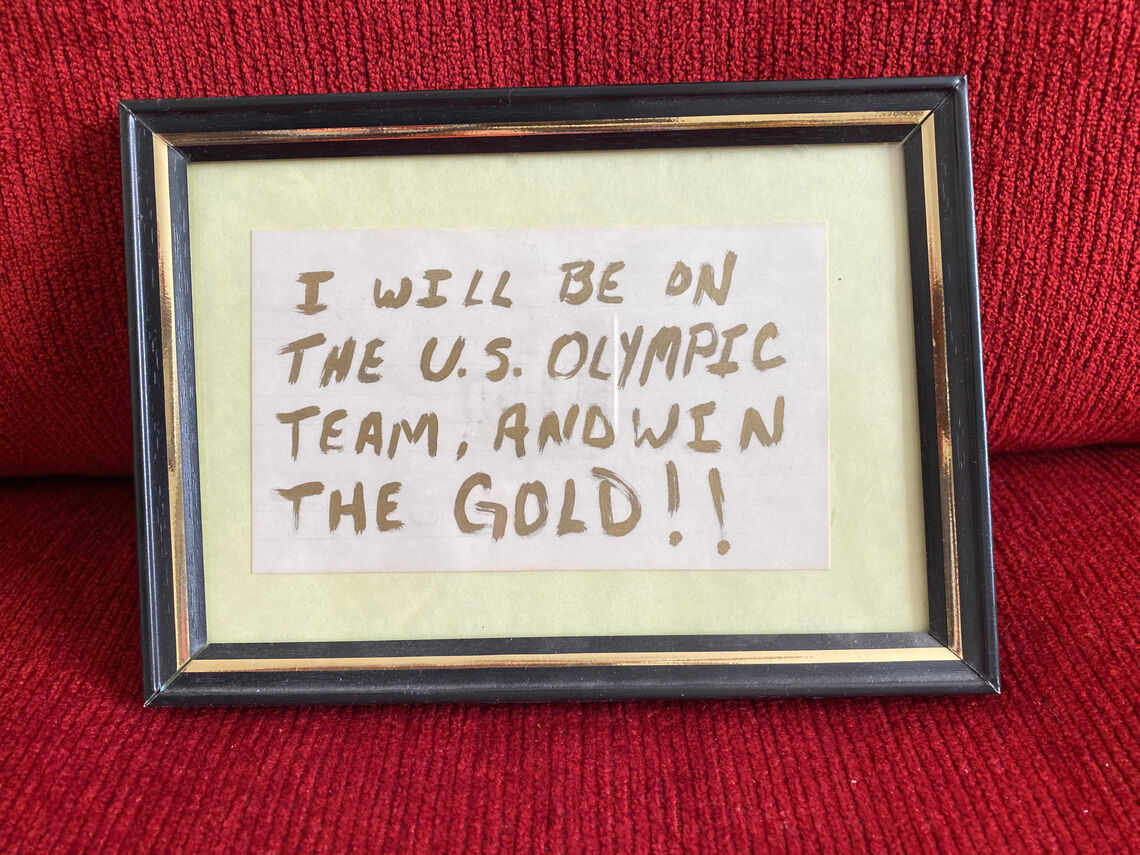
The card stayed behind when he left for Seoul. “I had read it so many times,” Barrs said. “By the time I got there, it was either going to happen, or it wasn’t.”
His brother had it framed and waiting for him when he returned home with a gold medal around his neck. Both medal and note were physical manifestations of a reality that had previously existed entirely inside his own head.
Any lingering doubt had dissipated.
Despite Jay’s initial resistance to the concept of visualisation, the proof was indisputable.
“If you do it correctly, it works,” Barrs said. “Again, it’s total voodoo. But it works. Even with a bad attitude, it worked for me.”




